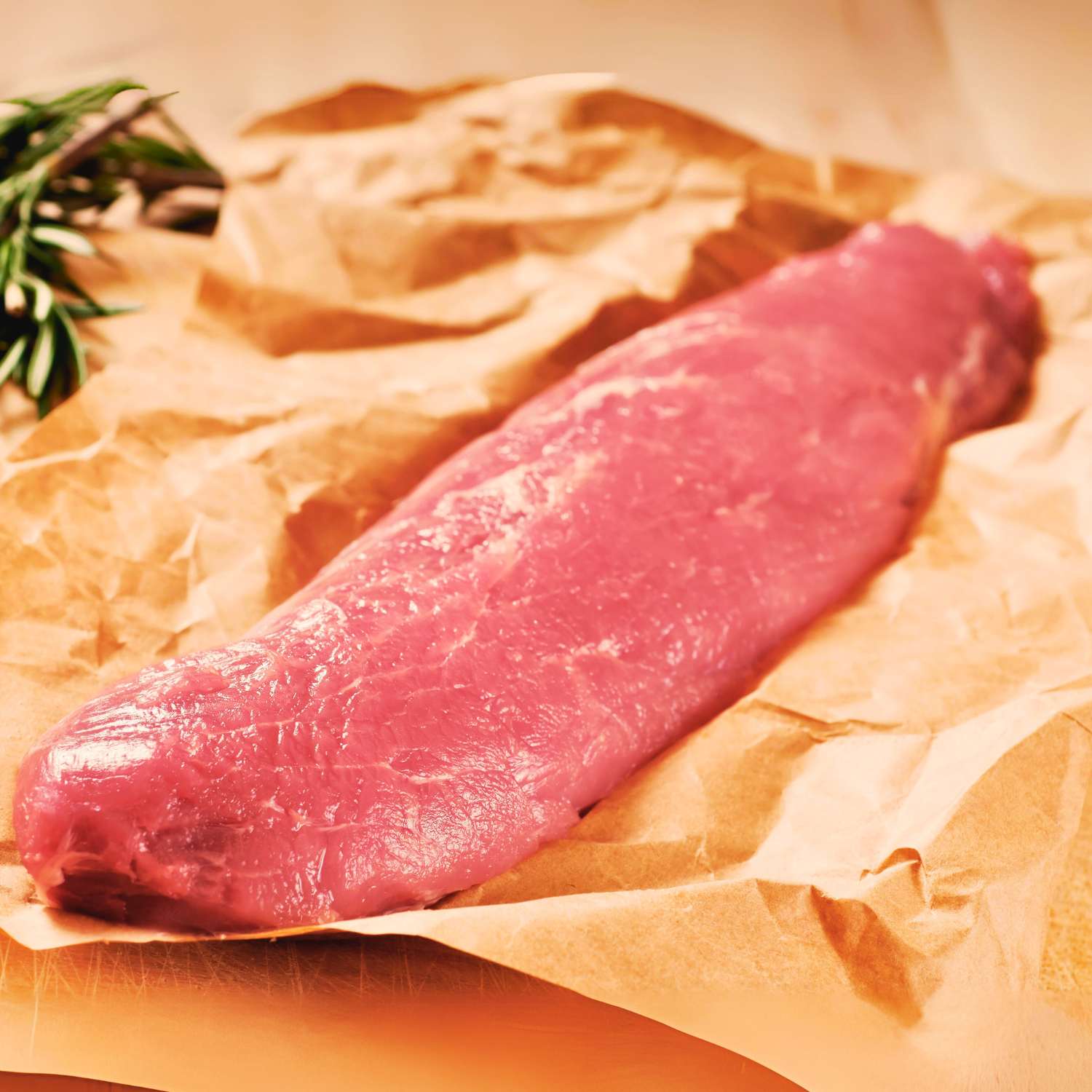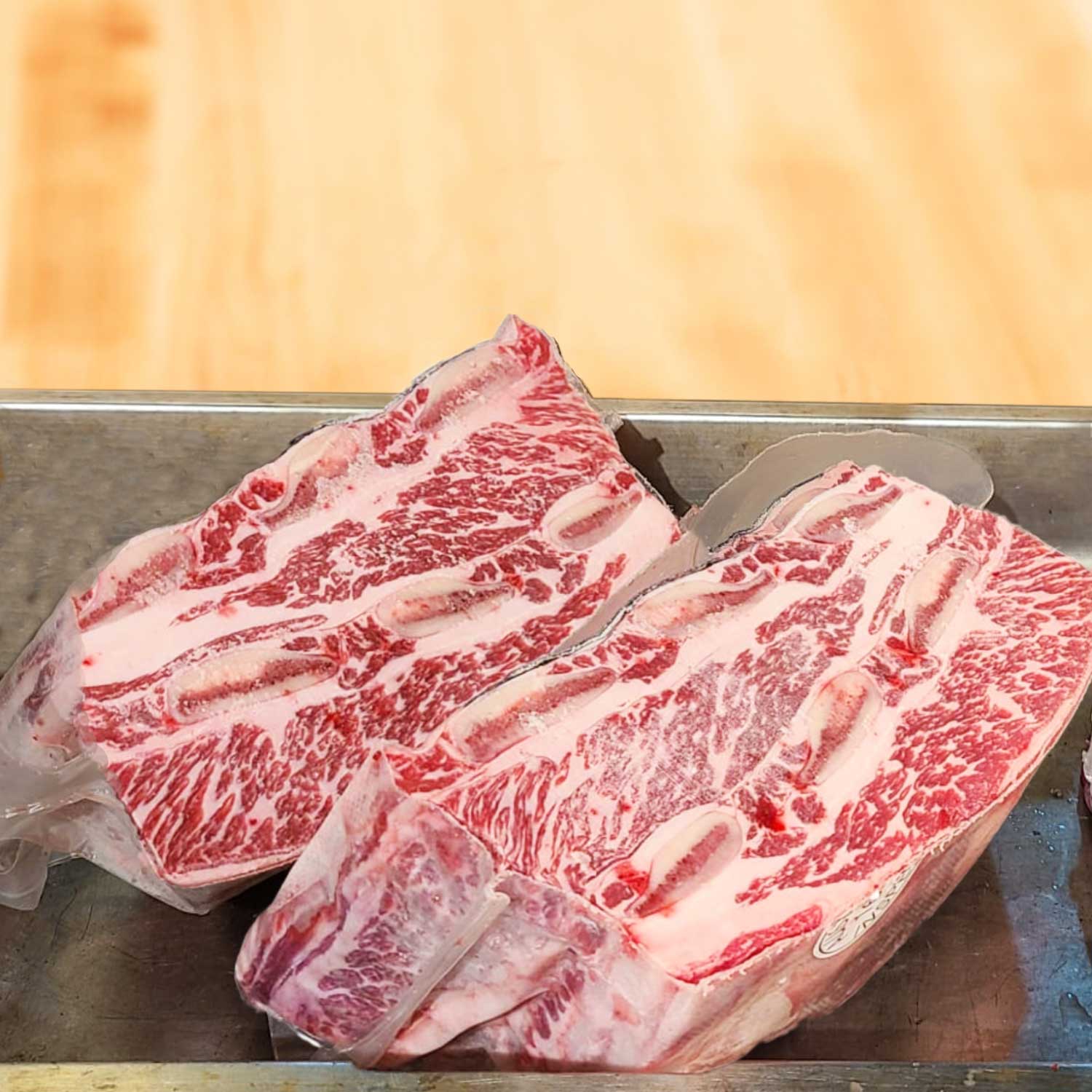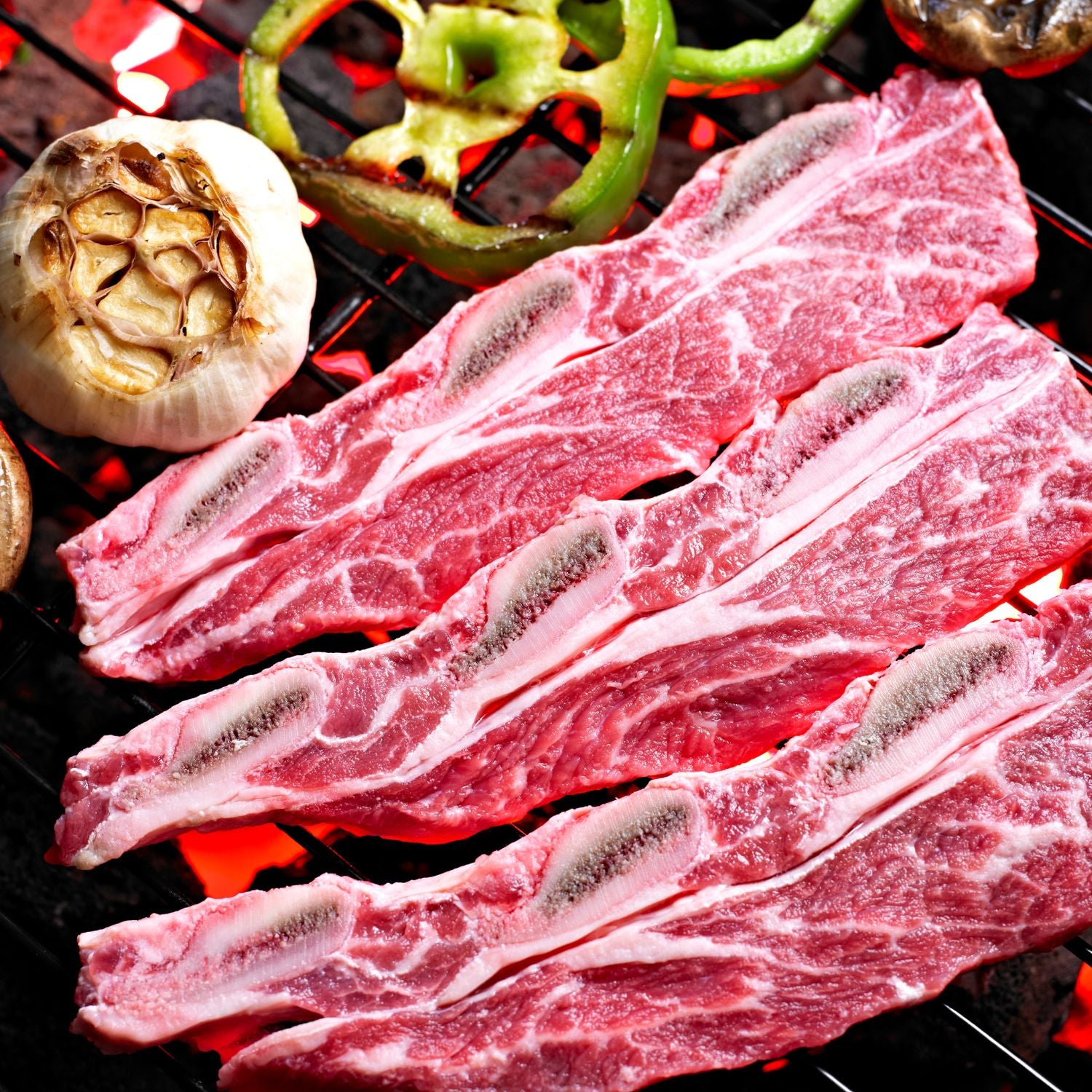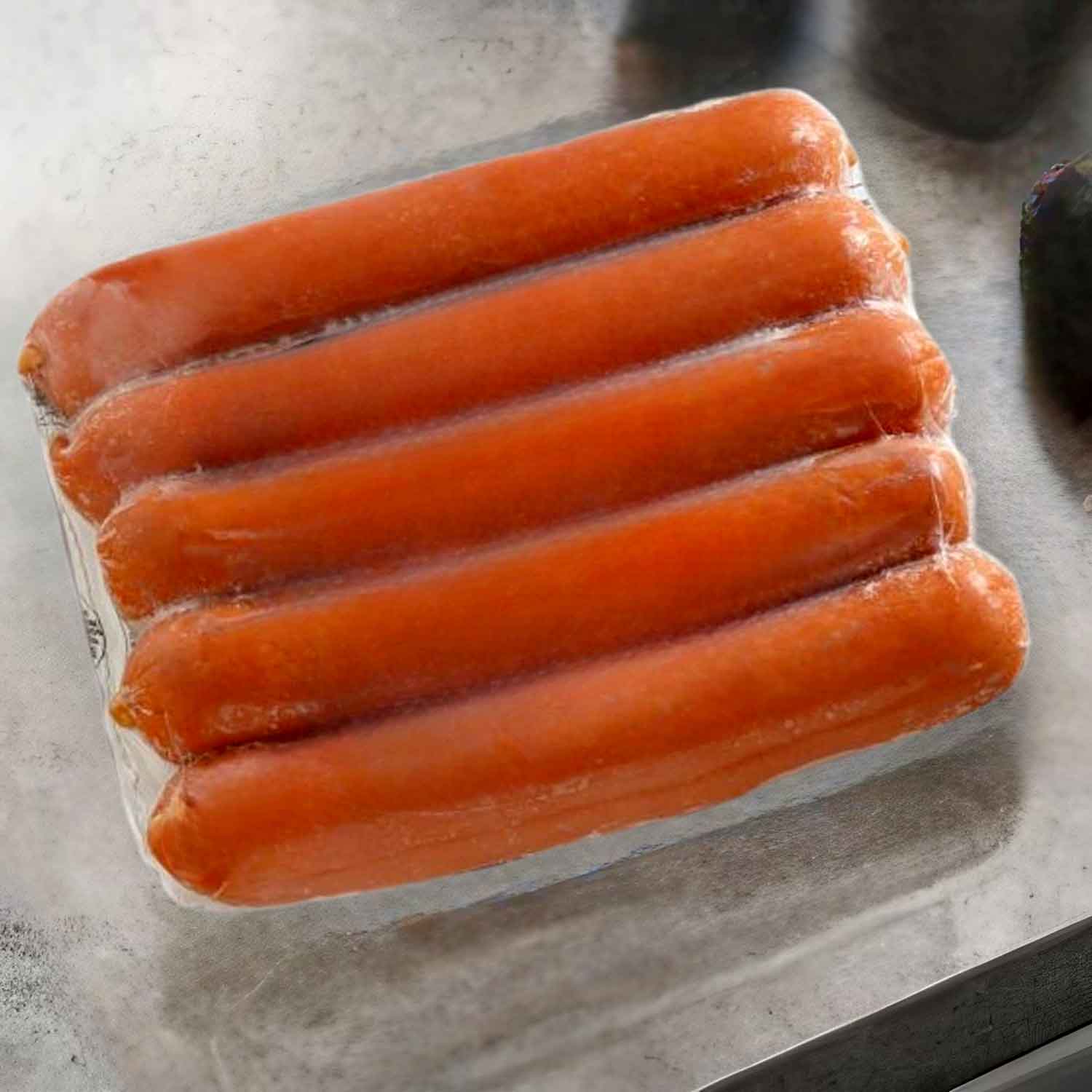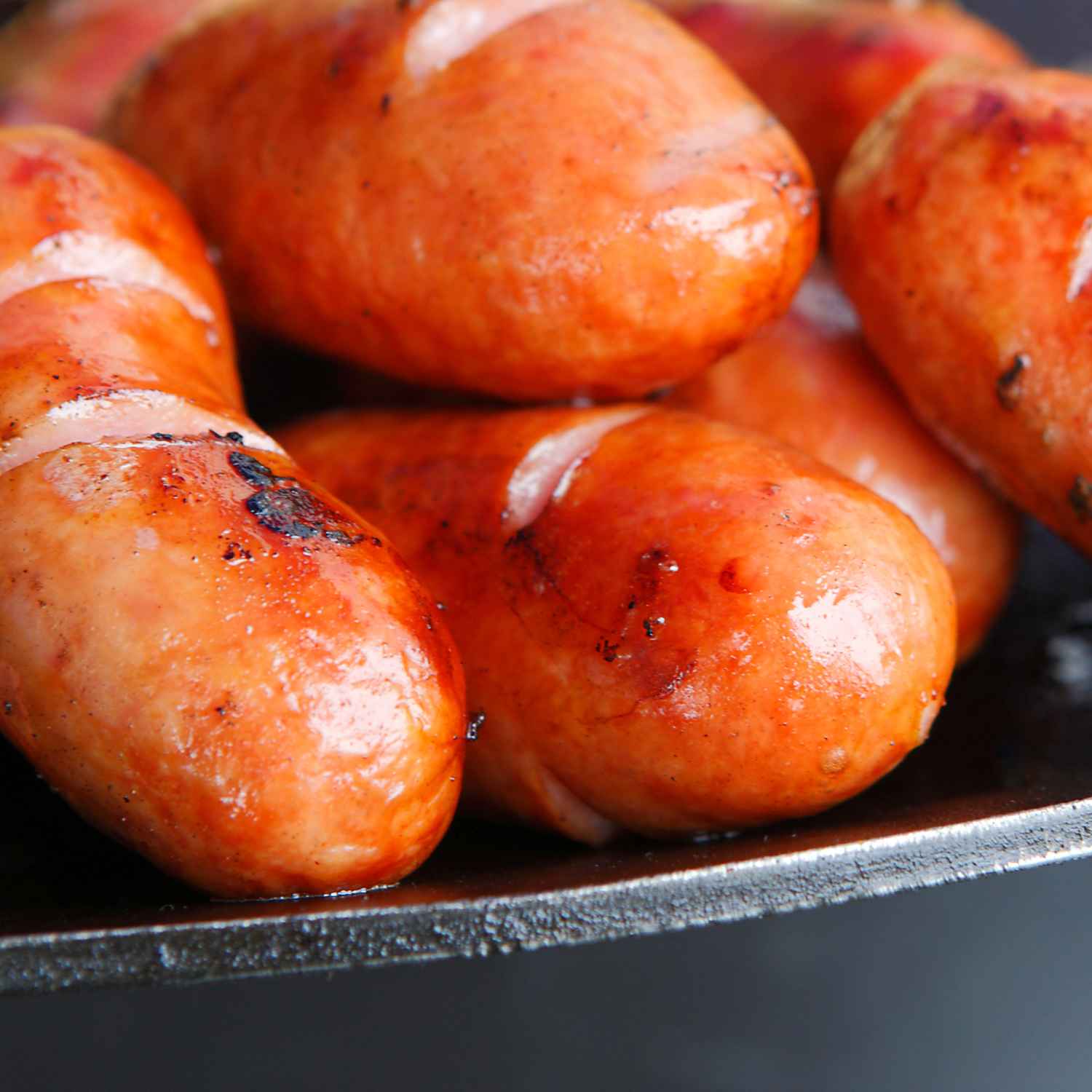Understanding Wagyu: A Guide to the Finest Japanese Steak
The Origins of Wagyu: A Journey to the Land of Kobe
Wagyu beef hails from Japan. It's known for its rich marbling. This gives it a unique taste and texture. The name 'Wagyu' means Japanese cow. It refers to breeds like Kobe, Matsusaka, and Ōmi. These breeds are raised with special care. Their diet and environment contribute to the quality of the meat. Kobe beef, the most famous type, comes from the Hyogo region. It must meet strict standards to earn the Kobe label. These include the lineage of the cattle and feeding practices. Wagyu has become a symbol of luxury in the steak world. In Hong Kong, it's sought after by steak connoisseurs. The journey of Wagyu begins in Japan. But its reputation spans the globe. The origins of Wagyu show the dedication to exceptional beef.

Grading the Experience: What Sets Wagyu Apart
Wagyu stands out from other steaks for its grading system. Here's a simple breakdown:
- Marbling: The intense fat lines give a buttery taste.
- Color: Rich reds signify quality meat.
- Texture: Wagyu should feel smooth and tender.
- Fat Quality: The whiter the fat, the better.
- Yield Score: It indicates the amount of meat on the cow. Wagyu gets an A, B, or C grade.
- Quality Grade: This scales from 1 to 5, five being top-rated.
This system ensures only the best cuts earn the Wagyu label.
Cooking Wagyu: Best Practices for a Perfect Steak
Cooking Wagyu steak requires skill to preserve its quality. First, let the meat reach room temperature. Next, season it simply with salt to enhance its natural flavors. Heat your pan or grill to high and sear each side quickly, without overcooking. The goal is a crusty exterior and a juicy, tender interior. To ensure this, cook to no more than medium-rare. After cooking, rest the steak. This lets the juices distribute for a perfect finish. Enjoy the melt-in-your-mouth texture and rich taste unique to Wagyu.
Exploring Hong Kong's Top Dry-Aged Steaks
What Is Dry-Aged Steak and Why Is It Special?
Dry-aged steak is a culinary delight. This aging process is key to its unique flavor. Special enzymes break down muscle tissue. This results in a more tender and rich-tasting steak. In Hong Kong, meat lovers seek out this premium experience. Top steakhouses age beef from 21 to 120 days. It is often seen as a luxury menu item. Dry-aging requires precise humidity and temperature control. The taste is unmatched, with a deep, nutty, and complex flavor profile.
The Science Behind Dry-Aging: Enhancing Flavor and Texture
Dry-aging beef is a unique process that improves its taste and feel. The meat is left in a controlled environment where humidity, temperature, and air flow are carefully managed. Over time, moisture evaporates from the muscle, creating a richer beef flavor. Natural enzymes break down the fibrous tissues, making the steak tender. This method, done for weeks to months, turns good beef into an exceptional treat. In Hong Kong, aficionados cherish this craft for the unrivaled dining experience it offers.
A Comparative Taste: Wagyu vs. Dry-Aged Steaks
When it comes to steak, Wagyu and dry-aged are both top choices. Yet, they differ in taste and texture. Wagyu steaks are known for their intense marbling and rich flavor. They are buttery smooth and melt in your mouth. Dry-aged steaks offer a distinct taste. They have a richer, more concentrated beef flavor. They are also tender but with a bit of chew. Comparing them is all about preference. Do you love juicy, tender Wagyu? Or the bold, beefy punch of dry-aged? In Hong Kong's meat scene, you can savor both and find your favorite.
Mastering the Craft of Grilling: Tips and Recipes
Selecting the Right Grill for Your Steak: Features That Matter
For steak aficionados in Hong Kong, choosing the right grill is pivotal.
- Heat Control: Look for precise temperature settings.
- Size: Consider if compact or large grills suit your space and needs.
- Materials: Cast iron grates offer durability and excellent heat retention.
- Fuel: Decide between gas, charcoal, or electric grills.
- Extras: Features like built-in thermometers aid in cooking perfection.
Selecting based on these features will enhance your steak-grilling experience.
Grilling Techniques: From Rib Eye to Tomahawk Steak
- Preheat your grill to a high heat before starting.
- For rib-eye steaks, use direct heat to sear both sides. After searing, move to indirect heat to finish cooking.
- When grilling tomahawk steaks, start with indirect heat due to their size, and finish with a direct sear to create a crust.
- Always let your steak rest for several minutes post-grill to allow juices to redistribute.
- Use a meat thermometer to check for doneness. Medium-rare is typically 130-135°F.
Marinades and Seasonings: Elevating Your Steak Game
For the perfect steak, marinades and seasonings are key. They add flavor and tenderize the meat. Use fresh herbs like rosemary for a fragrant touch. For robust taste, mix garlic, pepper, and sea salt. Don't forget acidic elements like lemon juice or vinegar to break down fibers. Let your steak sit in the marinade for at least an hour before grilling.















